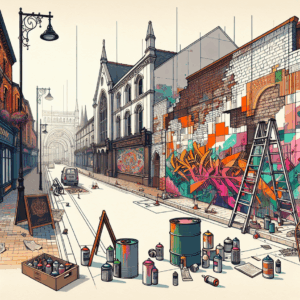As climate change continues to exert its grip on our planet, cities across the globe find themselves increasingly vulnerable to extreme weather events.
Recent incidents such as the devastating floods in Valencia and the wildfires sweeping Los Angeles are stark reminders of how urban areas can be precariously positioned as ‘sitting ducks’ in the path of natural disasters. These events highlight an urgent need for cities to rethink their approach to disaster preparedness and resilience.
Urban planners and policymakers face the daunting challenge of fortifying cities against unpredictable and intense climate events.
In Valencia, the recent floods have not only disrupted daily life but have also pointed to infrastructure inadequacies that need immediate attention. Meanwhile, in Los Angeles, chronic drought conditions have created a perfect tinderbox scenario, emphasizing the need for ongoing investment in fire management and mitigation strategies. Both cases underscore the importance of proactive rather than reactive measures.
Cities must invest in sustainable infrastructure, such as green roofs and permeable pavements, to better manage water runoff during heavy rains.
Similarly, integrating advanced water storage systems can alleviate the impact of droughts by ensuring a reliable water supply. Efforts to increase green spaces not only help regulate urban temperatures but can also serve as buffer zones during natural disasters. These interventions are crucial for minimizing the potential devastation caused by climate change-induced weather phenomena.
Innovation also plays a critical role in safeguarding urban environments.
Smart city technologies, like predictive analytics and real-time monitoring systems, can enhance early warning capabilities and facilitate quicker response times to impending disasters. By integrating technology with traditional urban planning, cities can create more resilient infrastructures that not only withstand but thrive amidst climatic challenges.
As global weather patterns grow increasingly erratic, it is imperative for cities to look beyond temporary fixes and build long-term resilience strategies.
This involves a commitment from all stakeholders, including governments, businesses, and residents, to collaborate on creating adaptable, forward-thinking urban environments. By doing so, cities can transform from passive ‘sitting ducks’ into active bastions of resilience, ready to confront whatever climatic challenges lie ahead.



